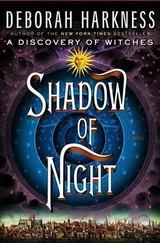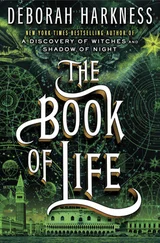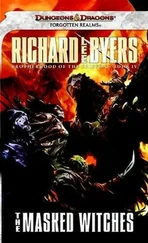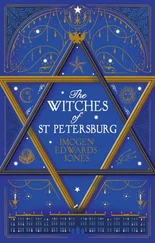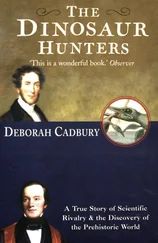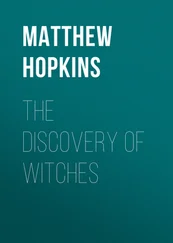I wrote the number 1 in thick black ink on the green paper. Then I froze.
A desk drawer that was difficult to find was designed to hide something.
Matthew kept secrets—this I knew. But we had known each other only a few weeks, and even the closest of lovers deserved privacy. Still, Matthew’s tight-lipped manner was infuriating, and his secrets surrounded him like a fortress devised to keep other people—me—out.
Besides, I only needed a piece of paper. Hadn’t he rifled through my belongings at the Bodleian when he was looking for Ashmole 782? We’d barely met when he pulled that stunt. And he had left me to shift for myself in France.
As I carefully recapped the pen, my conscience nevertheless prickled. But my sense of injury helped me to cast that warning aside.
Pushing and pulling at every bump and bulge, my fingers searched the carvings on the desk’s front edge once more without success. Matthew’s letter opener rested invitingly near my right hand. It might be possible to wedge it into the seam underneath and pry the drawer open. Given the age of the desk, the historian in me squawked—much louder than my conscience had. Violating Matthew’s privacy and engaging in ethically questionable behavior might be permissible, but I wasn’t going to deface an antique.
Under the desk once more, I found it was too dark to see the underside of the drawer clearly, but my fingers located something cold and hard embedded in the wood. To the left of the drawer’s nearly imperceptible join was a small metal bump approximately one long vampire reach from the front of the desk. It was round and had cross-hatching in the center—to make it look like a screw or an old nail head.
There was a soft click overhead when I pushed it.
Standing, I stared into a tray about four inches deep. It was lined with black velvet, and there were three depressions in the thick padding. Each held a bronze coin or medal.
The largest one had a building’s outline cut into its surface and rested in the midst of a hollow nearly four inches across. The image was surprisingly detailed and showed four steps leading up to a door flanked by two columns. Between them was a shrouded figure. The building’s crisp outlines were marred by fragments of black wax. Around the edge of the coin were the words “militie Lazari a Bethania.”
The knights of Lazarus of Bethany.
Gripping the tray’s edges to steady myself, I abruptly sat down.
The metal disks weren’t coins or medals. They were seals—the kind used to close official correspondence and certify property transactions. A wax impression attached to an ordinary piece of paper could once have commanded armies to leave the field or auctioned off great estates.
Based on the residue, at least one seal had been used recently.
Fingers shaking, I pried one of the smaller disks from the tray. Its surface bore a copy of the same building. The columns and the shrouded figure of Lazarus—the man from Bethany whom Christ raised from the dead after he’d been entombed for four days—were unmistakable. Here Lazarus was depicted stepping out of a shallow coffin. But no words encircled this seal. Instead the building was surrounded by a snake, its tail in its mouth.
I couldn’t close my eyes quickly enough to banish the sight of the de Clermont family standard and its silver ouroboros snapping in the breeze above Sept-Tours.
The seal lay in my palm, its bronze surfaces gleaming. I focused on the shiny metal, willing my new visionary power to shed light on the mystery. But I’d spent more than two decades ignoring the magic in my blood, and it felt no compunction to come to my aid now.
Without a vision, my mundane historical skills would have to be put to work. I examined the back of the small seal closely, taking in its details. A cross with flared edges divided the seal into quarters, similar to the one Matthew had worn on his tunic in my vision. In the upper right quadrant of the seal was a crescent moon, its horns curved upward and a six-pointed star nestled in its belly. In the lower left quadrant was a fleur-de-lis, the traditional symbol of France.
Inscribed around the edge of the seal was the date MDCI—1601 in Roman numerals—along with the words “secretum Lazari”— “the secret of Lazarus.”
It couldn’t be a coincidence that Lazarus, like a vampire, had made the journey from life to death and back again. Moreover, the cross, combined with a legendary figure from the Holy Land and the mention of knights, strongly suggested that the seals in Matthew’s desk drawer belonged to one of the orders of Crusader knights established in the Middle Ages. The best known were the Templars, who had mysteriously disappeared in the early fourteenth century after being accused of heresy and worse. But I’d never heard of the Knights of Lazarus.
Turning the seal this way and that to catch the light, I focused on the date 1601. It was late for a medieval chivalric order. I searched my memory for important events of that year that might shed light on the mystery. Queen Elizabeth I beheaded the Earl of Essex, and the Danish astronomer Tycho Brahe died under far less colorful circumstances. Neither of these events seemed remotely relevant.
My fingers moved lightly over the carving. The meaning of MDCI washed over me.
Matthew de Clermont.
These were letters, not Roman numerals. It was an abbreviation of Matthew’s name: MDCl. I was misreading the final letter.
The two-inch disk sat in my palm, and my fingers closed firmly around it, pressing the incised surface deep into the skin.
This smaller disk must have been Matthew’s private seal. The power of such seals was so great that they were usually destroyed when someone died or left office so that no one else could use them to commit fraud.
And only one knight would have both the great seal and a personal seal in his possession: the order’s leader.
Why Matthew kept the seals hidden puzzled me. Who cared about or even remembered the Knights of Lazarus, never mind his onetime role in the order? My attention was captured by the black wax on the great seal.
“It’s not possible,” I whispered numbly, shaking my head. Knights in shining armor belonged to the past. They weren’t active today.
The Matthew-size suit of armor gleamed in the candlelight.
I dropped the metal disk into the drawer with a clatter. The flesh of my palm had poured into the impressions and now carried its image, right down to its flared cross, crescent moon and star, and fleur-de-lis.
The reason Matthew had the seals, and the reason fresh wax clung to one of them, was that they were still in use. The Knights of Lazarus were still in existence.
“Diana? Are you all right?” Ysabeau’s voice echoed up from the foot of the stairs.
“Yes, Ysabeau!” I called, staring at the seal’s image on my hand. “I’m reading my e-mail and got some unexpected news, that’s all!”
“Shall I send Marthe up for the tray?”
“No!” I blurted. “I’m still eating.”
Her footsteps receded toward the salon. When there was complete silence, I let out my breath.
Moving as quickly and quietly as possible, I flipped the other seal over in its velvet-lined niche. It was nearly identical to Matthew’s, except that the upper right quadrant held only the crescent moon and “Philippus” was inscribed around the border.
This seal had belonged to Matthew’s father, which mean that the Knights of Lazarus were a de Clermont family affair.
Certain there would be no more clues about the order in the desk, I turned the seals so that Lazarus’s tomb was facing me once more. The drawer made a hushed click as it slid invisibly into position underneath the desk.
I picked up the table that Matthew used to hold his afternoon wine and carried it over to the bookcases. He wouldn’t mind me looking through his library—or so I told myself, kicking off my loafers. The table’s burnished surface gave a warning creak when I swung my feet onto it and stood, but the wood held fast.
Читать дальше

